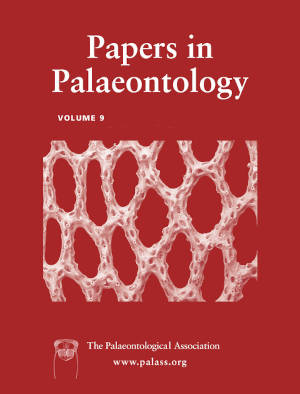Article: Evaluating growth in Macrospondylus bollensis (Crocodylomorpha, Teleosauroidea) in the Toarcian Posidonia Shale, Germany
Publication: Papers in Palaeontology
Volume:
9
Part:
5
Publication Date:
2023
Article number:
e1529
Author(s):
Michela M. Johnson, Eli Amson, and Erin E. Maxwell
DOI:
10.1002/spp2.1529
Abstract
Abstract The study of how organisms grow is a fundamental aspect of palaeontology. Growth in teleosauroids is poorly understood and little studied, especially in an ontogenetic sense. We investigate growth rates of the most common and abundant teleosauroid, Macrospondylus bollensis, in which a large sample of multiple body sizes is available from the Posidonienschiefer Formation (Posidonia Shale) of southwestern Germany. We perform linear regression analyses on 62 specimens of Macrospondylus (16 juveniles, 7 subadults and 39 adults) using 21 cranial and postcranial measurements. Our results show that juvenile, subadult and adult individuals have near-isometric or isometric growth throughout much of the body. Notably, we find that in Macrospondylus: (1) the femur grows at a faster rate than the skull and hindlimb zeugopodium; (2) the forelimb and hindlimb grow at the same rate; and (3) there is distinct ontogenetic signal in the growth of the orbit and supratemporal fenestra. We also find that limb scaling in Macrospondylus is somewhat comparable to that seen in the extant gavialids Gavialis gangeticus and Tomistoma schlegelii. Last, we examine evolutionary allometry in skull length relative to body size in Crocodylomorpha using femoral length as a proxy, which shows a near-isometric trend. Non-thalattosuchian crocodylomorphs (with the exception of one pholidosaurid and one dryosaurid taxon) are differentiated from thalattosuchians due to their shorter skulls, as previously suggested, but the scaling relationship with femur length remains unchanged.
